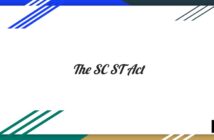The Indian Constitution provides fundamental rights and duties, directive principles, and various rules to ensure the system’s smooth functioning and generate the relationship of trust and coordination among the people to live together in harmony. Article 368 of the Indian Constitution lays down the provisions for amendments that can be made to the Constitution depending upon the changes in the social, economic, political, and cultural situations. In this article, we will discuss a constitutional amendment, the process through which an amendment can be made, and the latest amendments to the Constitution.
What is the Constitutional Amendment?
Part XX Article 368 of the Indian Constitution provides that the Parliament has the power to amend or make changes to the provisions of the Constitution. These changes can be addition, revocation, or alteration to any provisos in compliance with this article.
How are Constitutional Amendments made?
Any amendment to the Constitution can be made in the following steps:
- A bill or an amendment is introduced in either House of the Parliament,
- The proposed amendment has to be presented in both the Houses of Parliament. It should be accepted by the total majority of the members of the house and a two-thirds majority of the members present and voting;
- After that, the bill shall be presented to the President for his approval
However, if the amendment makes any changes in:
- Article 54, 55, 73, 162 or 241 or
- Chapter IV of Part V, Chapter V of Part VI or Chapter 1 of Part XI or
- Any Seventh Schedule List; or
- State’s Representations in Parliament, or
- Provisions of this article,
Such an amendment should be approved by at least one-half of the State Legislature through a resolution before presenting it to the President for his assent.
One exception is that the Parliament cannot amend Article 13, Part III, or any other provisions that form part of the “basic structure of the constitution,” as defined under Keshavanada Bharti Vs. The State of Kerala.
Latest Amendments to the Constitution
The Constitution (97th Amendment) Act, 2012
A new Part, i.e., Part IX B, was inserted after Part IX-A relating to ‘Co-operative Societies’ working in India. It added the new word “co-operatives” right after “unions and associations” in Article 19 (1) (c) under Part III of the Constitution. It further added Article 43 B to the Directive Principle of State Policy – Part IV for “promotion of co-operative societies.” This amendment aims at providing citizens with the fundamental right to create a body that would manage their economic activities.
The Constitution (98th Amendment) Act, 2013
This amendment inserted new Article 371 J to enable the Governor of the State of Karnataka to take steps to develop the Hyderabad- Karnataka region, including six backward districts of North Karnataka. The development activities include establishing a separate development board to ensure equitable allocation of funds, equal opportunities, and facilities in education and vocational training and public employment.
The Constitution (99th Amendment) Act, 2014
This amendment inserted Article 124 A, 124 B, and 124 C for the National Judicial Appointment Commission appointment. It lays down the Commission’s function and the Parliament’s power to make laws relating to the appointment of the Chief Justice and other judges and other matters relating to the discharge of their duties.
The Constitution (100th Amendment) Act, 2015
It amended the Ist Schedule of the Constitution, which gave effect to the agreement that acquires and transfers the territory between India and Bangladesh. It enables the physical exchange of enclaves (i.e., territory belonging to one country surrounded by another country). These enclaved residents can either move to the country they wish to or reside at their current location.
The Constitution (101st Amendment) Act, 2016
It inserted Article 246 (A), 269 (A), and 279 (A).
Article 246 (A) states that the Parliament has exclusive power to make laws concerning goods and service tax (GST) imposed by the Union or State government as the case may be.
Article 269 (A) states that the government shall have the power to levy and collect taxes, and such taxes will be equally shared between the Union and State government. These proceeds will not be added to the Consolidated Fund of India or State, but its share shall be assigned to the State.
Article 279 (A) provides for the GST Council appointment to categorize goods and services that would be covered under Goods and Service Tax and to make laws and principles that govern such goods and services.
VIIth Schedule: The amendment further made changes to the VIIth Schedule, whereby Entry 84 of the Union List is replaced by the Petroleum crude, motor spirit (petrol), high-speed diesel, tobacco products and tobacco, natural gas, and aviation turbine fuel. It has also been removed from the Union List Entry 92 (newspaper) and Entry 92 C (service tax), Entry 52 (sale in State).
In Entry 54 Taxes on Sales or purchase of goods other than newspaper are replaced with Taxes on Petroleum crude, motor spirit (petrol), high-speed diesel, tobacco products and tobacco, natural gas and aviation turbine fuel and alcoholic liquor for human consumption but does not include the sale in course of interstate or international trade or commerce of such goods.
Entry 55 (news) deleted.
Entry 62, Taxes on luxuries are replaced by taxes by the local government.
The Constitution (102nd Amendment) Act, 2018
This amendment inserted Article 338 B for the National Commission for Backward Classes (NCBC) appointment for the socially and educationally backward classes. The Commission shall –
- Examine and detect all the query relating to the deprivation, rights, and safeguards of the socially and educationally backward classes;
- Partake and suggest on the socio-economically backward classes;
- Present a report to the President;
- Suggest the implementation of such safeguard;
- The President shall present such safeguard before the House of Parliament or State Government as the case may be.
The amendment further inserted Article 342 A, stating that President may, in consultation with the Governor, specify who shall be deemed socially and educationally backward by providing public notice. It further states that the Parliament can by providing public notice, add or remove such class of people from the Central list.
Article 366 inserted Article 26 C that defines the “socially and educationally backward classes”.
The Constitution (103rd Amendment) Act, 2019
It amended Article 15 and 16 of the Constitution and inserted Article 15 (6) stating that the State Government has the power to make provision for the “advancement of any economically weaker section of citizens other than those mentioned in clause (4) and (5)” relating to admission to an educational institution such as private educational institution whether aided or unaided, excluding minority institution referred in clause (1) of Article 30. It also provides for a maximum of 10% reservation in addition to the existing quota. It categorizes the “economically weaker section” based on family income and other economic disadvantage indicators.
Article 16(6) provides for 10% reservation in addition to the existing quota for the reservation in appointments or posts in favour of any economically weaker section of the society.
The Constitution (104th Amendment) Act, 2020
This inserted Article 334 provides for reservation of seats and special representation to cease after a certain period- wherein ’70 years’ period was replaced with ’80 years’.
The Constitution (124 Amendment) Bill, 2019
This amendment provides for the upliftment and advancement of education and employment to the economically weaker section of the society. It provides for reservation for people who have
- less than 8 lakh annual income,
- less than 5 acres of farmland or
- less than 1000 sq. ft. house in a town (or 100 sq. yard in a municipal area).
Looking at the economic backwardness of the Other Backward Classes and the well-being and upliftment of the economically weaker section of society, the Modi government seeks to sub-categorize the Other Backward Classes. The NDA government also wants to add more power and privileges to the NCBC to create interest in the educationally and socially backward classes.
Conclusion:
With the changing phase of society, the Constitution also needs to be changed to keep on par with the progress which is beneficial for the society. India being a democratic country, enables its citizen to increase their political participation by expressing their opinion and strengthening their trust in the judiciary and Constitution. Amendment to the Constitution removes any government constraints by adding more flexibility and enhancing freedom and confidence in the government, which creates a healthy environment among the citizens.

